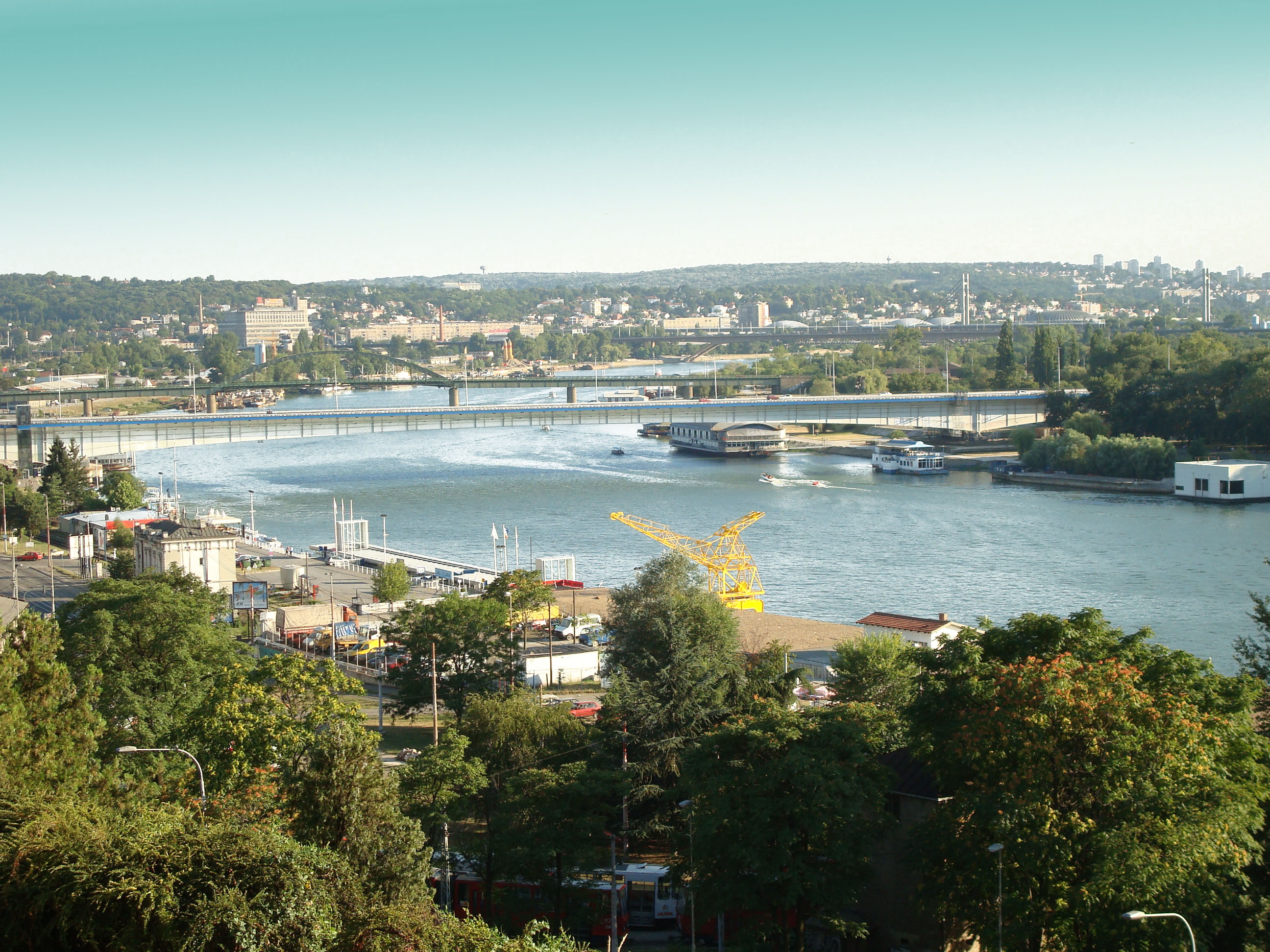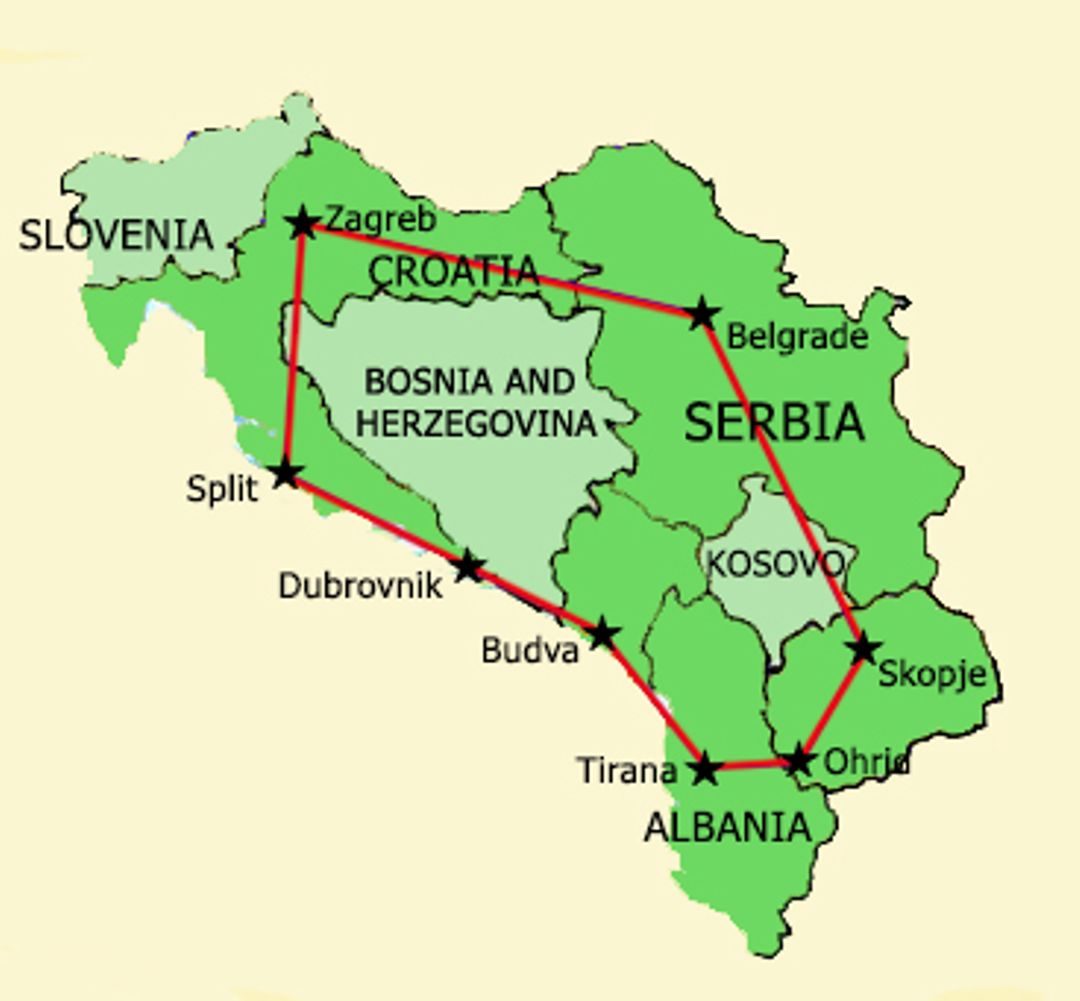
Your journey will start in Zagreb, The Croatian capital. While many descend on Croatia’s coastline directly, those in the know make their way to the country’s capital first. It’s a place to meander through the streets of the center with its colorful attractions, to enjoy the cafe culture and pop into edgy and even quirky museums.
Just a few hours driving from Zagreb, you’ll wonder at Plitvice National Park, a place where waterfalls cascade down sheer cliffs connecting sixteen pristine lakes.
Medieval architecture, tranquil lakes and Croatian charm will delight you featuring Dubrovnik and the pearls of the stunning Dalmatian coast.
Step back into Roman times in Diocletian’s Palace, which comprises Split’s Old Town.
Than you’ll go along the Coast to explore the white stone buildings, winding alleys, and massive city walls of the ancient harbor town, Dubrovnik.
Budva will be your next port of call, known for its well preserved medieval walled city, sandy beaches and diverse nightlife.
On the Way to Tirana, you’ll have the Possibility to stroll through the local bazaar of Shkoder, get a glimpse of Albanian traditions. Having undergone a transformation of extraordinary proportions since awaking from its communist slumber in the early 1990s, Tirana’s center is now unrecognizable, with buildings painted in primary colors, and public squares and pedestrianized streets that are a pleasure to wander.
A short stop in St.Naum Monastery, before reaching Ohrid, known as the Pearl of the Balkans. The uniqueness of Lake Ohrid and the city’s historical architecture has been attested by UNESCO, honoring it with an official designation as one of the few places on the cultural institution’s list “World Inheritance”.
The next planned short stop is in Skopje, which apart from being the capital of the modern Republic of Macedonia, has always been a center of power yearned for by various empires. Situated on the banks of the River Vardar, a vital trade route is being founded by the Dardanians in the 3rd c. B.C known as “Skupi”, a much-prized city for its strategic location.
Your last overnight before returning to Zagreb will be in one of the oldest cities in Europe, Belgrade. This city has so many secrets, but one of them hides inches below the surface. Literally. More than one hundred caves, canals, tunnels, passages tell the story of its connection to various empires and states that ruled here over the ages.
The return in Zagreb marks the end of this tour.
It’s time for you flight home!
Balkan peninsula or simply the Balkans has always been an area where West meets East; a place of many crossroads and area of layered geographical and cultural diversity.
Traveling from the Adriatic coastline to Inland Peninsula, from spectacular Dubrovnik and Colorful Tirana to Ohrid Lake you will have the unforgettable experience and see why this Cultural tour crossing 5 different countries: Croatia, Montenegro, Albania, Macedonia, and Serbia, is par excellence.
ZAGREB
Zagreb, the capital and largest city of Croatia, dates back to the Middle Ages. The Romans had built a settlement, Andautonia, in present-day Ščitarjevo. The name “Zagreb” was first used in 1094 at the founding of the Zagreb diocese in Kaptol, after the Slavs had arrived in the area. For most of its history, Zagreb was a small town to which big things happened. It has been ruled by Hungary and the Habsburg Monarchy, threatened by the Ottomans, and absorbed into Yugoslavia. Since 1995, as the capital of Croatia the city is on the way to becoming a Central European metropolis. Today Zagreb is the Croatian cultural, scientific, economic and political center. With numerous museums, galleries, theatres, churches, cafes, open markets, clubs and pubs, Zagreb is a city pulsing with life. A city which owes its beauty and charm to prosperous periods of baroque, classicism and secession.
Basic Facts
Country Name: Croatia
City: Zagreb (capital)
City Population: 790017
City Color: Blue
St. Mark’s Square
This square is named after the church in its centre whose varnished tiled roof is a symbol of the capital. The church itself is Romanesque and late Gothic. St. Mark’s Church dates back to at least the 13th century. The square is surrounded by numerous buildings which are the offices of the Croatian cabinet members and the Croatian sabor (Parliament).
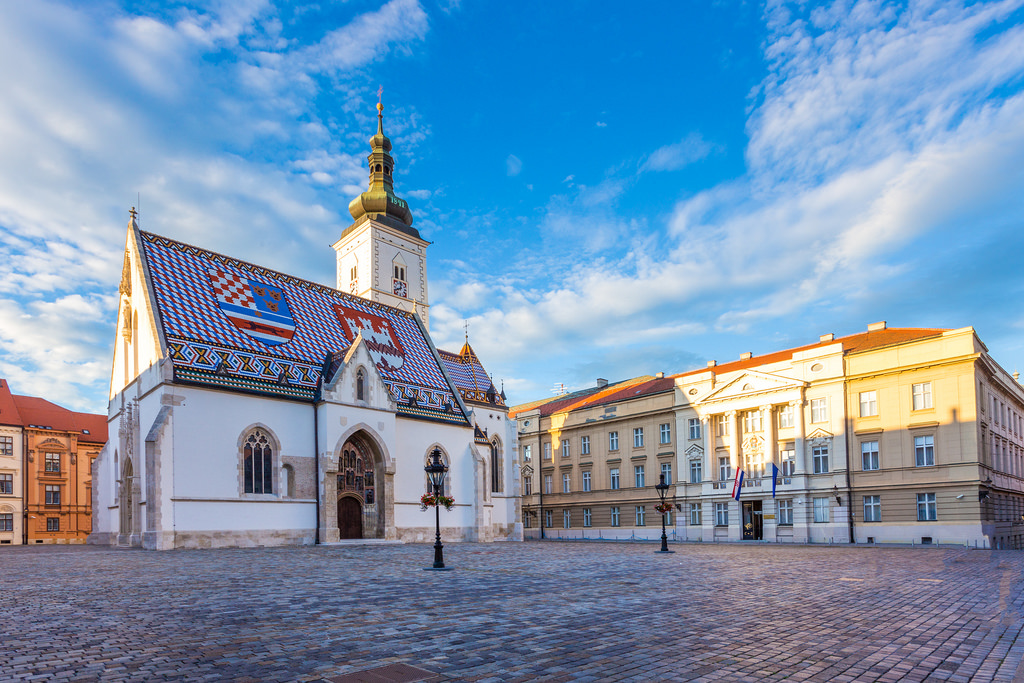
The Cathedral
Although parts of the cathedral date from the 13th century (and after), it was very badly damaged in an earthquake in 1880. Most of the structure, including its spires, dates from the late 19th/early 20th centuries. Inside the cathedral you will find the tomb of Cardinal Stepinac (who was Archbishop of Zagreb from 1937 to 1960) which contains a sculpture by Croatia’s most celebrated sculptor, Ivan Mestrovic. The baroque Archbishops’ Palace is attached to the cathedral.
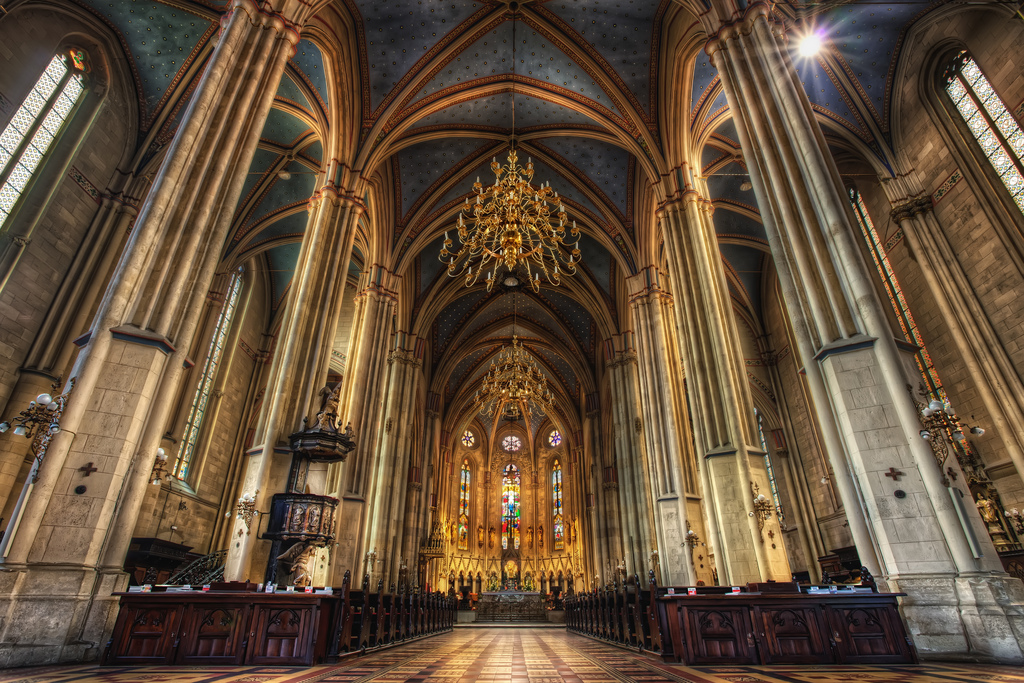
The Croatian National Theatre
Built in 1895 by Viennese architects Hermann Helmer and Ferdinand Fellner, the Croatian National Theatre (Hrvatsko Narodno Kazaliste) sits at the northwest corner of Zagreb’s “Green Horseshoe” in Donji Grad. Officially opened in 1894 by Austro-Hungarian Emperor Franz Joseph I, this imposing yellow structure in Trg Marsala is a landmark feature in the Lower Town. Built in Neo-Baroque and Rococo styles with two small domes at the front and a larger dome towards the back, the building also boasts a superb interior containing artworks by Vlaho Bukovac, and The Well of Life by Ivan Meštrović.
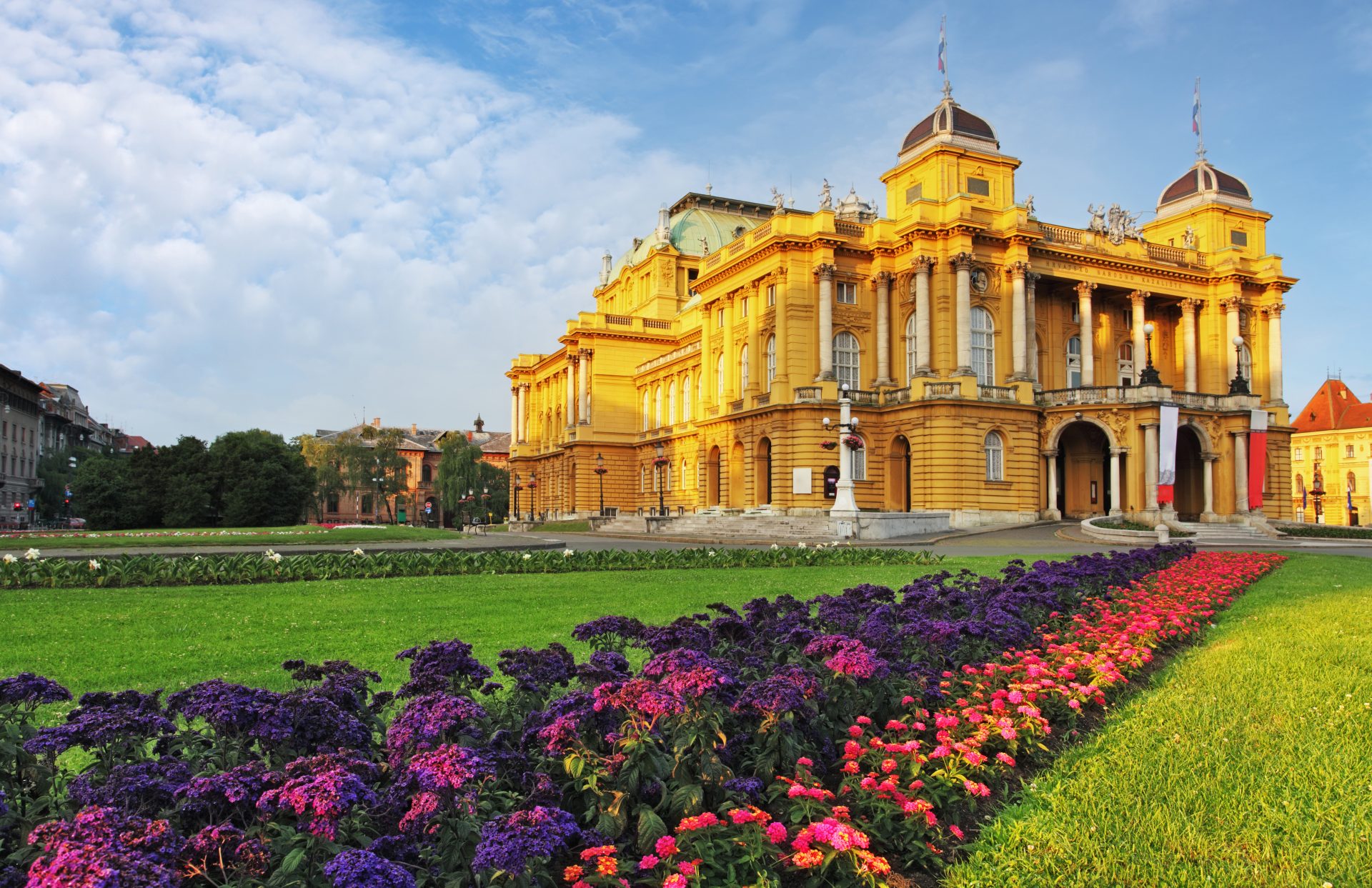
Maksimir Park
Designed in the style of an old English garden, Maksimir Park (Maksimirska) is a beautiful green space encompassing almost 45 acres. The largest park in Zagreb, it contains two pavilions: Bellevue Pavilion, built in 1843, and Echo Pavilion, added after a Swiss design. The park also boasts many excellent paths and trails, as well as manmade lakes, wooded areas, and flower gardens, making it a great place to relax or have a picnic. For those traveling with youngsters, there’s also a small zoo. Referred to by locals as Zagreb’s “living monument,” Maksimir Park is named after Bishop Maksimilijan Vrhovac, who was responsible for its construction in 1794. Across from Maksimir park is the Dinamo Football Stadium where Croatia hosts international matches.
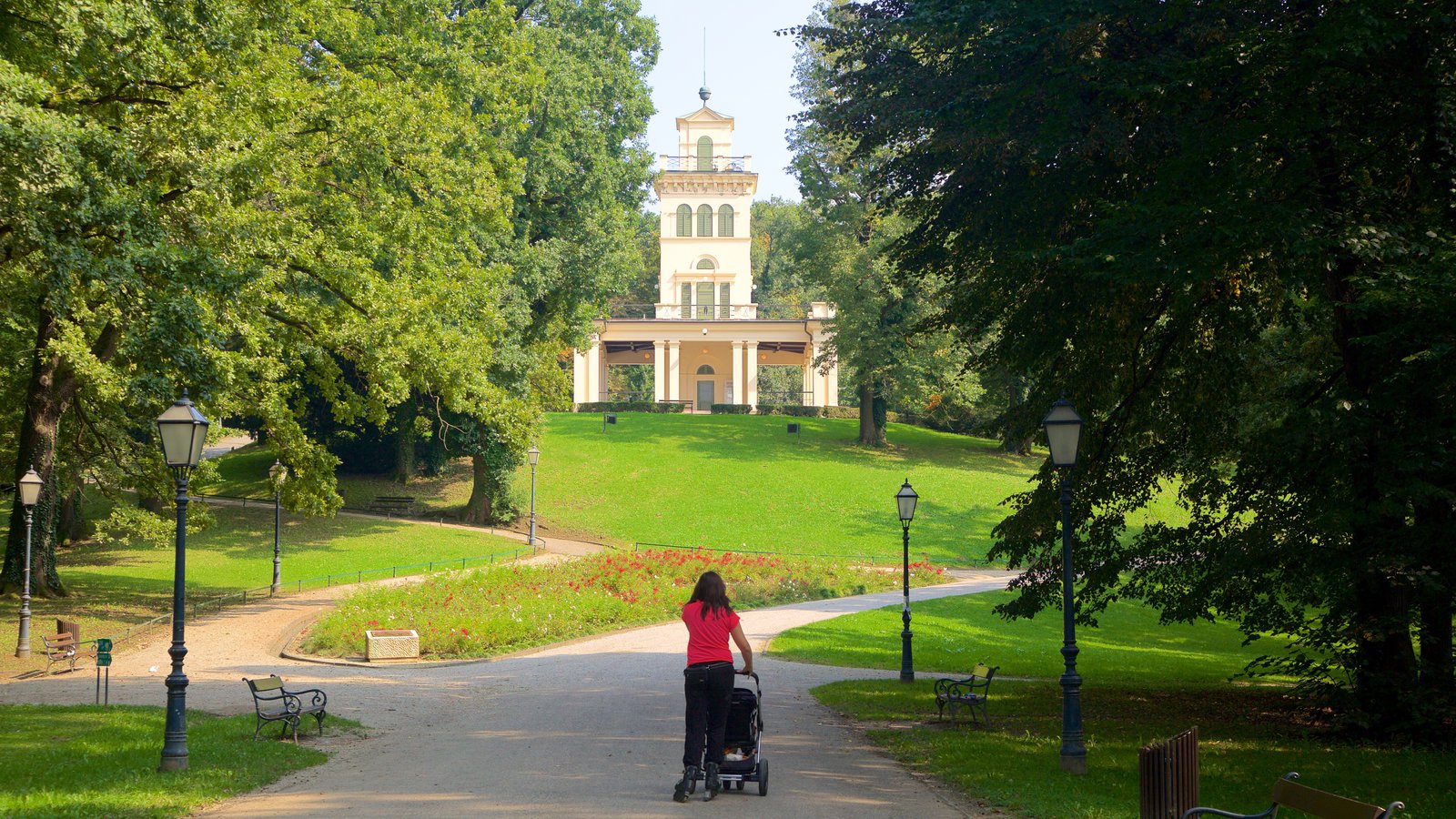
Lotrscak Tower
Built to guard the southern gate of the Gradec town wall, the Lotrščak Tower (Kula Lotrščak) dates to the 13th century and has long been one of Zagreb’s most recognizable landmarks. Legend has it that this large, square Romanesque tower once held a bell that rang out each night prior to the closing of the gates to warn residents outside the walls to return (anyone left outside would have to remain there for the night). The people of Zagreb are reminded of the time each day at midday when a cannon – called the Gric cannon – is fired.
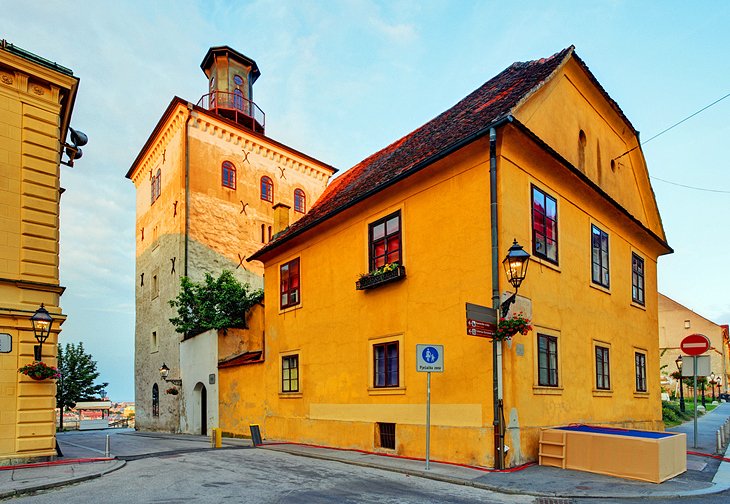
Ben Jelacic Square
Road traffic is also prohibited on this square, which is a gathering point for the modern city and is served by no fewer than seven of the city’s tram lines. Here you’ll get the sense of Zagreb as a bustling place of business, full of office workers and shoppers, and you can people-watch from the table of a sidewalk cafe. The square is named after 19th-century ruler, Count Josip Jelačić who was considered an expert military strategist. His statue was erected in the square in the 1800s, but because Jelačić came to symbolise Croatian nationalism it was removed during communist times before being reinstated in 1990.
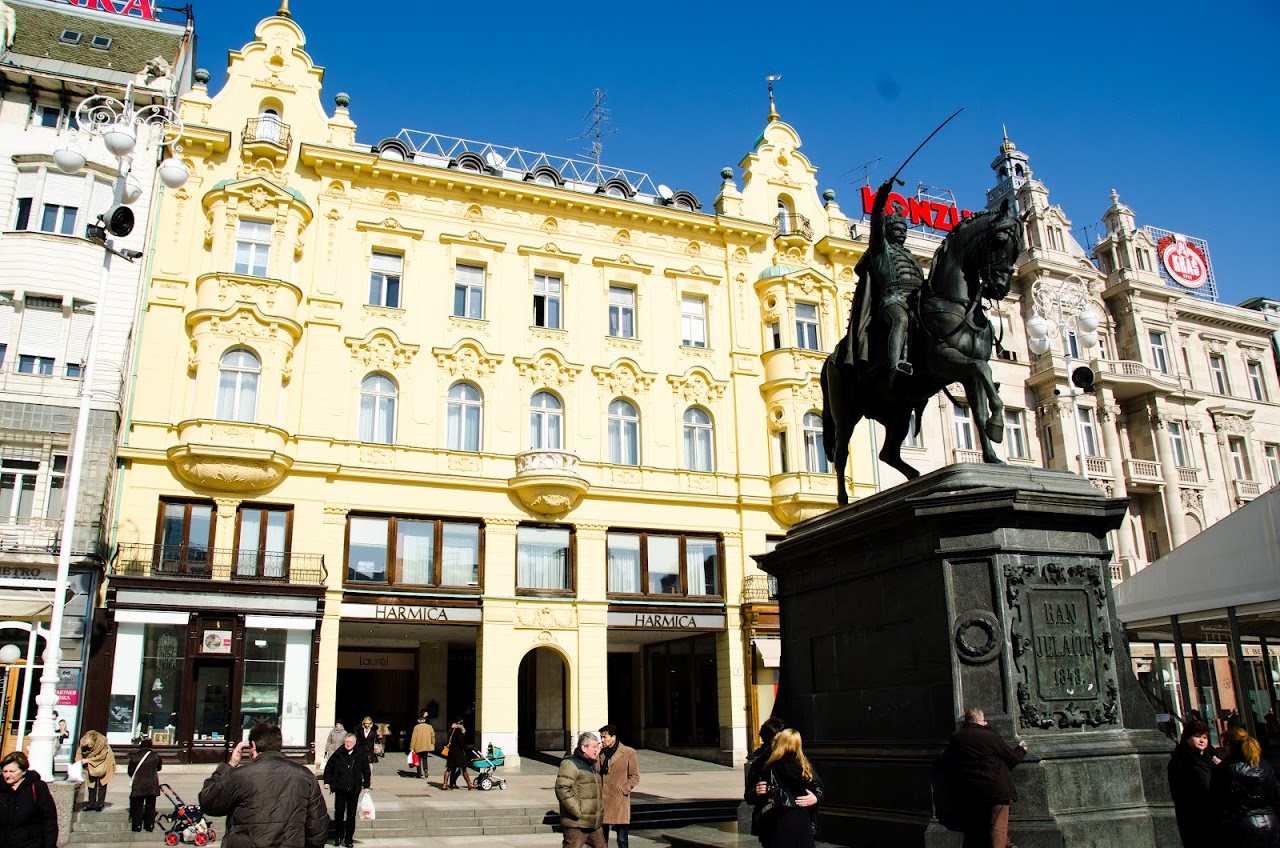
Dolac Market
Near the cathedral is Zagreb’s main market – the colorful Dolac. It is definitely worth a visit to see all the stalls and sellers in action. You will find many food items (particularly fruit and veg) on sale, although there will also be some craft items and other little bits and pieces on offer. You can also have an inexpensive meal in one of the fast-food kiosks close by.
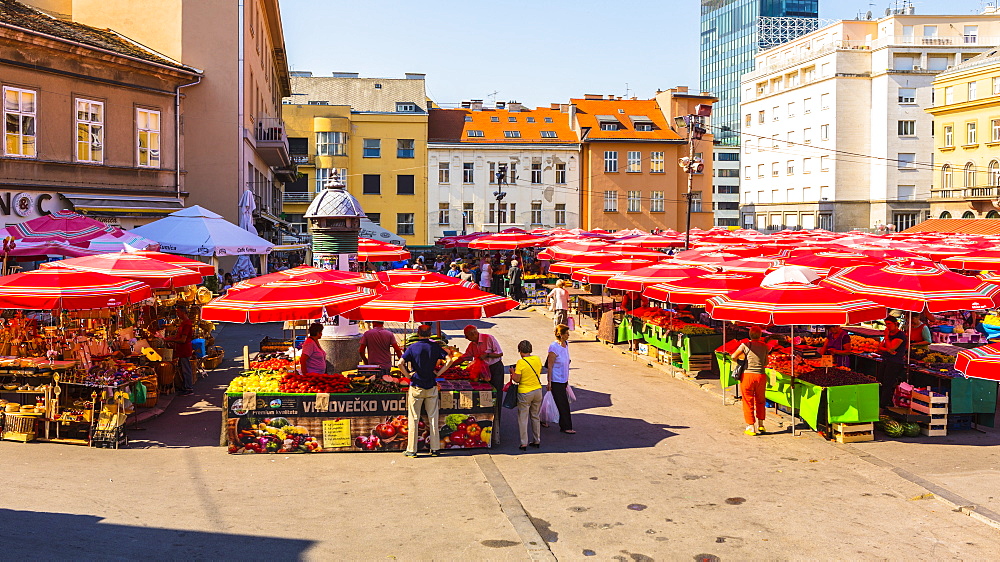
SPLIT
Croatia’s second-largest city, Split is a great place to see Dalmatian life as it’s really lived. Always buzzing, this exuberant city has just the right balance of tradition and modernity. Still, it is the breathtaking centerpiece of the city — Diocletian’s Palace, a UNESCO World Heritage site dating back to A.D. 295, and a recent film location for “Game of Thrones” — that makes Split so memorable.
You’ll see dozens of bars, restaurants and shops thriving amid the atmospheric old walls where Split life has been humming along for thousands of years.
Split has it all: Roman ruins and grand museums alongside fashionable cafes and trendy shops. But what makes this city most alluring is not just its proximity to the sandy beaches and rocky coves of nearby islands, but its location overlooked by mountains and edged by the deep blue Adriatic Sea.
Basic Facts
Country Name: Croatia
City Population: 1670000
Also known as: City of the Olympics
Almost 100 Olympic medals are from Split (basketball, handball, football, water polo, taekwondo and many others)
Diocletian’s Palace
Facing the harbour, Diocletian’s Palace is one of the most imposing Roman ruins in existence and where you’ll spend most of your time while in Split. Don’t expect a palace though, nor a museum – this is the city’s living heart, its labyrinthine streets packed with people, bars, shops and restaurants. Built as a military fortress, imperial residence and fortified town, the palace measures 215m from north to south and 180m east to west, altogether covering 38,700 sq metres.
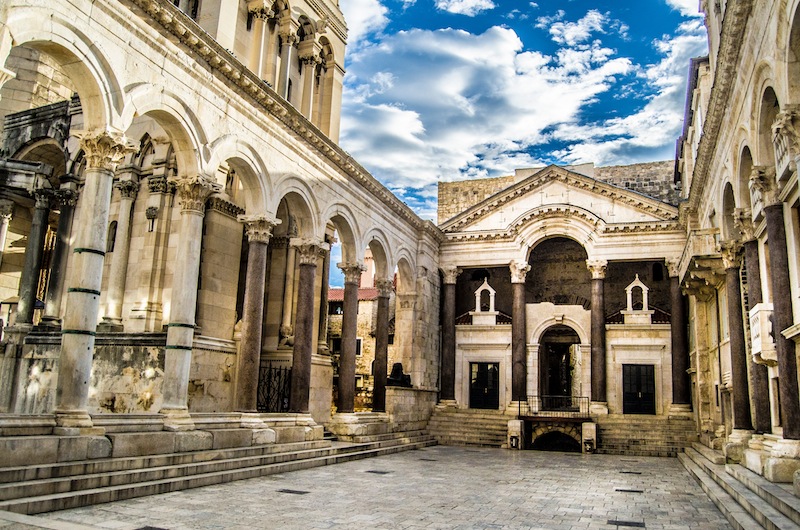
Peristyle Square
In front of the cathedral is the Peristyle square, the most popular among Split attractions, surrounded by columns that are the center of cultural life in Split, where the extraordinary acoustics maintained traditional cultural and musical events of Split Summer Festival.

Cathedral of St Dominius
Split’s octagonal cathedral is one of the best-preserved ancient Roman buildings standing today. It was built as a mausoleum for Diocletian, the last famous persecutor of the Christians, who was interred here in 311 AD. The Christians got the last laugh, destroying the emperor’s sarcophagus and converting his tomb into a church in the 5th century, dedicated to one of his victims.
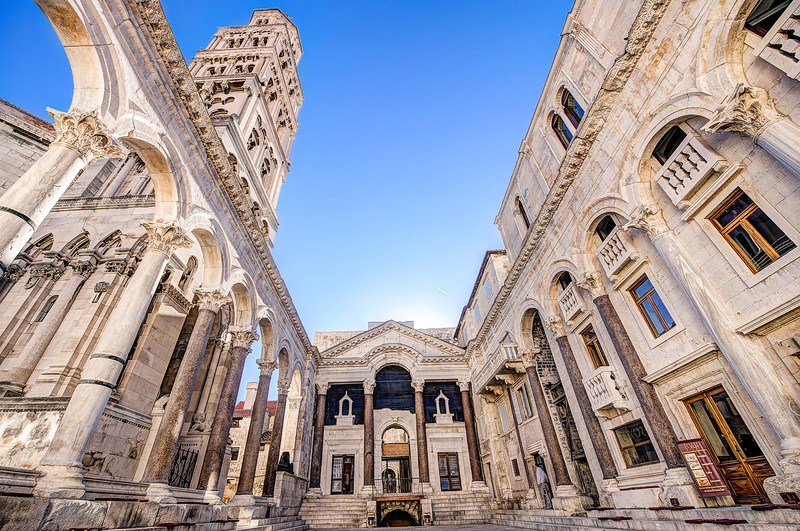
Temple of Jupiter
Although it’s now the cathedral’s baptistery, this wonderfully intact building was originally an ancient Roman temple, dedicated to the king of the gods. It still has its original barrel-vaulted ceiling and a decorative frieze on the walls, although a striking bronze statue of St John the Baptist by Ivan Meštrović now fills the spot where the god once stood. Of the columns that once supported a porch, only one remains. The black granite sphinx guarding the entrance was already ancient when the Romans dragged it from Egypt in the 3rd century. It was literally defaced by the Christians, who considered it a pagan icon.
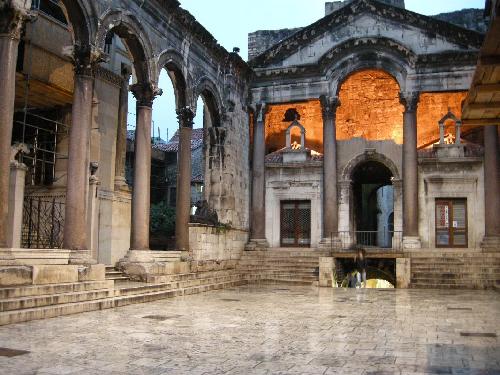
DUBROVNIK
The city of Dubrovnik (Latin: Ragusa) was built on maritime trade. In the Middle Ages it became the only city-state in the Adriatic to rival Venice. Supported by its wealth and skilled diplomacy, the city achieved a remarkable level of development during the 15th and 16th centuries. Furthermore, Dubrovnik was one of the centres of the development of the Croatian language and literature, home to many notable poets, playwrights, painters, mathematicians, physicists and other scholars.
Today Dubrovnik is the proudest feather in Croatia’s tourist cap, an elite destination and one of the most beautiful towns in the Mediterranean. Dubrovnik used to be an independent republic, surviving mostly on trade. It managed to survive many centuries, with constant threats to its territory, particularly from the mighty Ottoman Empire and Venice.
Dubrovnik is steeped in stunning architecture and sculptural detail, and boasts spectacular churches, monasteries, museums, and fountains.
Basic Facts
Country Name: Croatia
City Population: 40000
Also known as: Pearl of the Adriatic
It is one of the most prominent tourist resort of the Mediterranean
Rector Palace
Rector’s Palace was the seat of the Rector, who was elected to the post every month so as not to feel the sweetness of power.
During his reign, the Rector did not leave the palace unless statesman and protocol obligations required. Pile Gate and Ploce Gate were drawn every evening and locked with the keys given to the Rector overnight, which he then returned to the people in the morning. In Knezev Dvor there were halls for sessions of the Great and Small Council, an armoury, jail, courthouse and powder magazine which twice exploded, shattering palace, which was eventually rebuilt in the Baroque style.
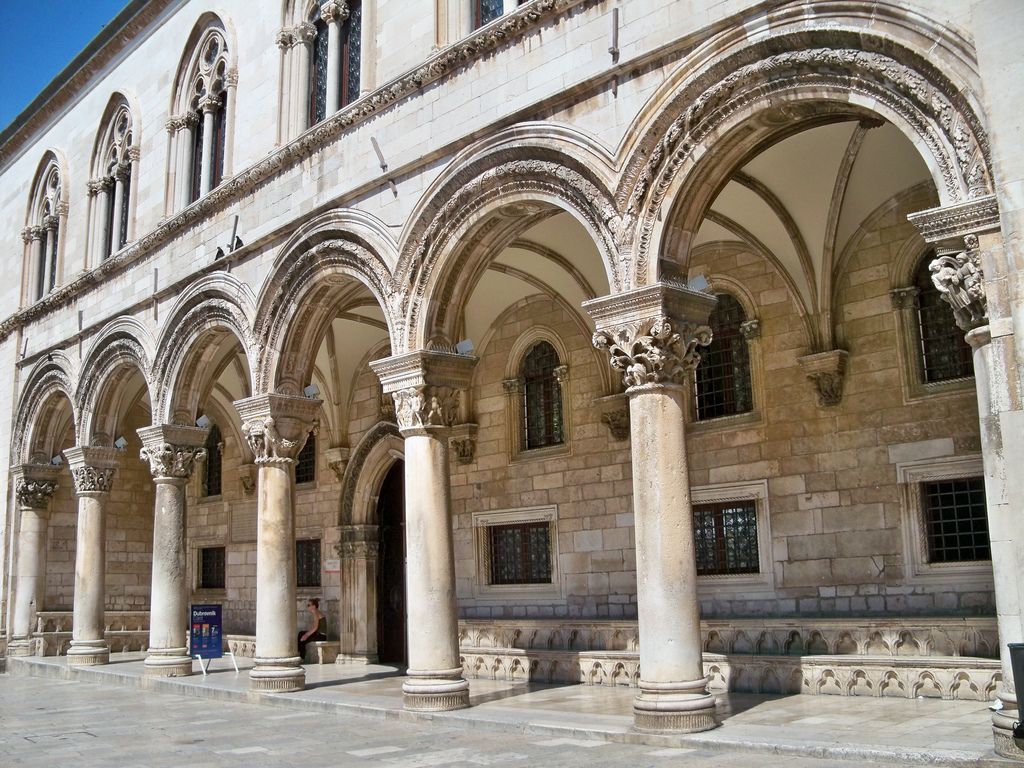
The Old Pharmacy in Franciscan Monastery
It was founded in 1317 as in-house pharmacy for Franciscan friars, which was later, introduced to the public servicing the whole Town’s population and even beyond the town’s walls.
Nowadays, in the pretty courtyard of Franciscan Monastery’s complex, intricate cloister lead to the Old Pharmacy Museum where among the exhibits you can see various pharmaceutical tools, containers, grinders and similar from the times of old Ragusa.
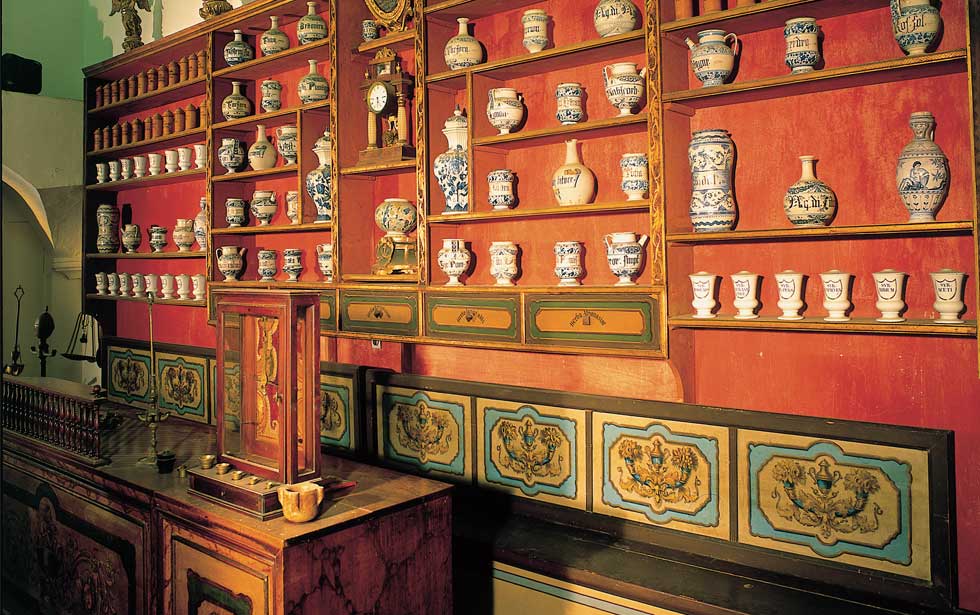
Stradun Square
Stradun (or officially ‘Placa’) is the main street in Dubrovnik Old Town. It divides the Old town (part of Dubrovnik built within medieval walls) on two, more or less, equal parts – northern and southern. Stradun is stretched from Pile Gate (western entrance to the old town) to the Old Town’s port. It used to be a channel that divided small island on which Dubrovnik was built from the mainland. Later on, the channel was filled to create the main town’s street.
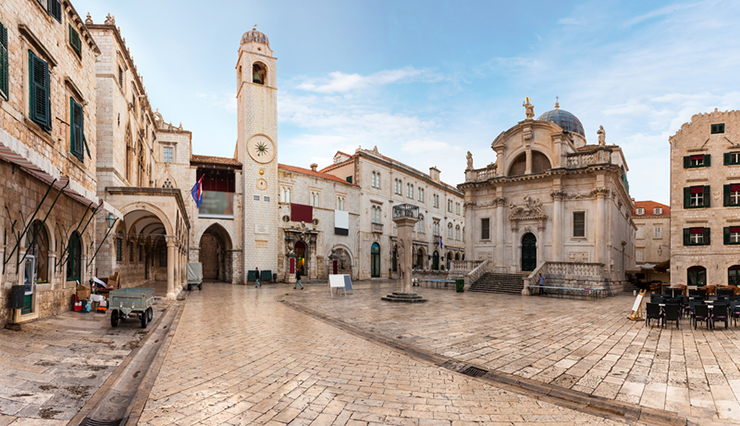
BUDVA
In the heart of the Adriatic coast of Montenegro, Budva is awaiting you and your unforgettable holiday is yet to begin. It looks at open sea, abounding in Mediterranean flora. In the hinterland of the Riviera of Budva, there is mountain Lovćen, which protects it from cold north winds and provide conditions for mild Mediterranean climate, which pleasantly impresses every visitor who comes to enjoy in the beauties of its climate.
The center of the Riviera is Budva, one of the oldest settlements in the Adriatic, with its old town with records from before the 5th century of our era. There are about forty beautiful settlements, villages in the Riviera among which is Bečići, whose beach was in 1935 in Paris proclaimed as the most beautiful beach in Europe, then Miločer – former royal residence, unique town – hotel, Sveti Stefan, Petrovac – Lastva, which is mentioned for the first time “Chronicle of Pope Dukljanin” in the 12th century.
Visit the wall of the Old town of Budva and feel the spirit of antique and renaissance charm of Budva.
You have 35 beautiful, sandy beaches (8 beaches have blue flag – a prestige international award for quality and standard of service and offer at the beach), clean and safe sea with unforgettable day and night life, unique theatre plays and musical entertainment programs.
Basic Facts
Country Name: Montenegro
City Population: 13,338
Also known as:Riviera of sandy beaches The Riviera of Budva is 25 km long and is in the center of Montenegrin coastline, covering 122 km². There are many coves, sandy beaches, capes and islets and picturesque settlements along the very coastline, which is why it is called the “Riviera of sandy beaches”.
The old town
The old town is Budva’s trademark. It is raised on the island, which used to be connected for the land by a sandy covering and so it grew into a peninsula. The Old Budva’s town is a unique architectonic and urban entity, which is mentioned as a lodgment even in the antique period. Budva according to those sources is one of the oldest urban centers in the Adriatic; it is more than 2.500 years old.
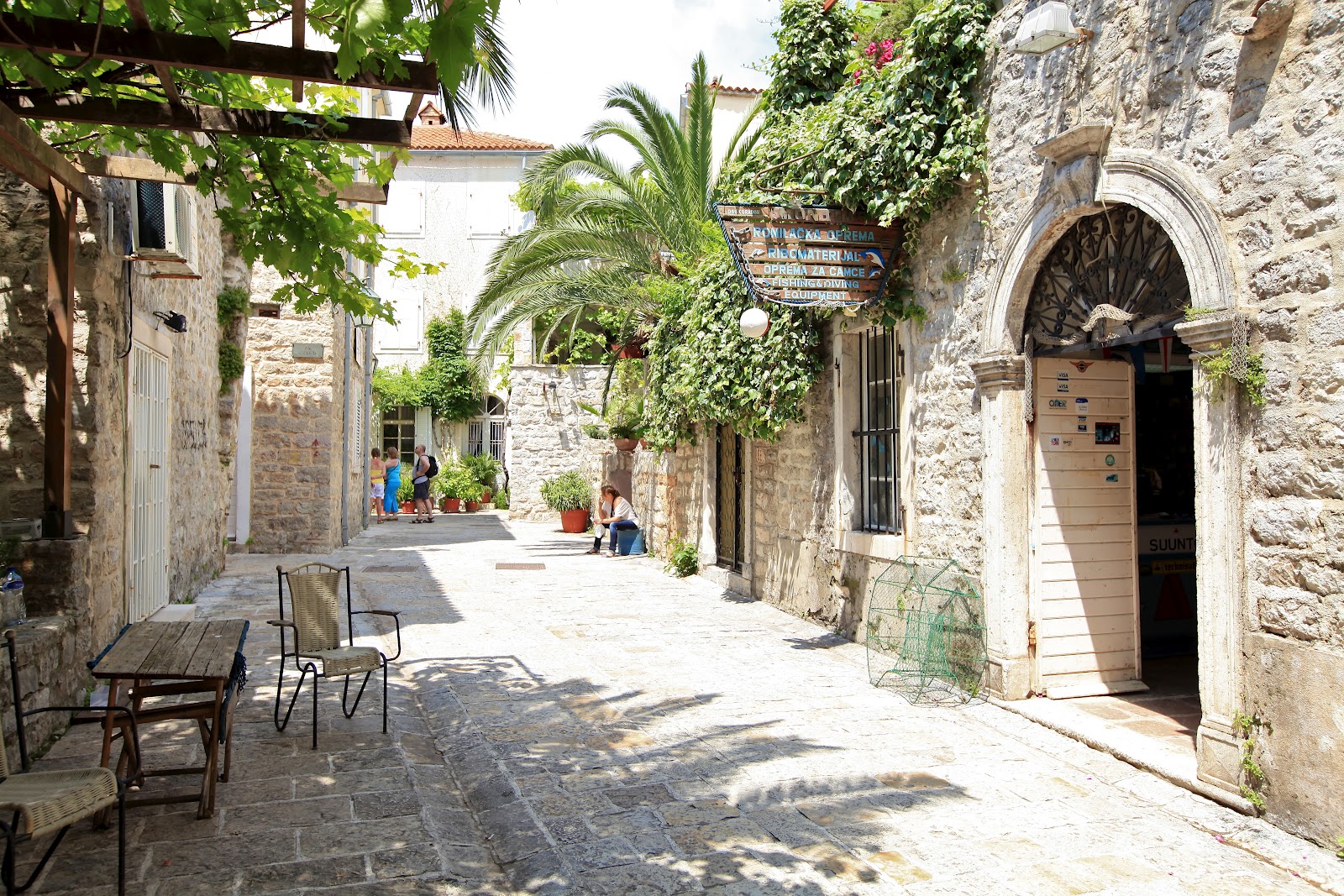
TIRANA
Tirana was founded as a city in 1614, although the area has been continuously inhabited since antiquity. One of the ancient monuments, the Tirana Mosaic is believed to have been part of a 3rd-century Ancient Roman house. Tirana did not attain much significance until the early 20th century, when the Congress of Lushnje proclaimed it Albania’s capital following the country’s declaration of independence in 1912.Tirana is the largest city in Albania and one of largest cities in the Balkans, ranking 7th, with a population of 800,000. The city is ranked among the ten sunniest cities in Europe, with 2,544 hours of sun per year.
Tirana is considered the heart of Albania because of its central location and its importance in finance, commerce, media, entertainment, arts, international trade, education, service, research and healthcare.
Basic Facts
Country Name: Albania
City Population: 800000
Capital city of Albania
Skenderbeg Square
The Skanderbeg Square is the main plaza in the centre of Tirana, Albania. The square is named after the Albanian national hero Gjergj Kastrioti Skënderbeu. Skanderbeg (born 1405, northern Albania – died Jan. 17,1468, Lezhë, Albania), national hero of the Albanians. A son of John (Gjon) Kastrioti, prince of Emathia, George was early given as hostage to the Turkish sultan. Converted to Islām and educated at Edirne, Turkey, he was given the name Iskander—after Alexander the Great—and the rank of bey (hence Skanderbeg) by Sultan Murad II. During the defeat of the Turks at Niš (1443), in Serbia, Skanderbeg abandoned the Turkish service and joined his Albanian countrymen against the forces of Islām. He embraced Christianity, reclaimed his family possessions, and in 1444 organized a league of Albanian princes, over which he was appointed commander in chief.
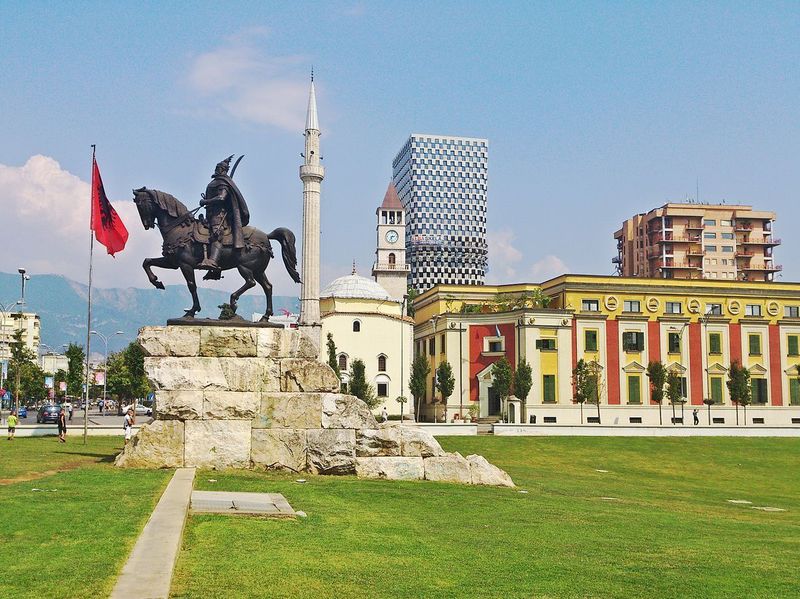
Et’hem Bey Mosque
The Et’hem Bey Mosque (Albanian: Xhamia e Et’hem Beut) is an 18th-century mosque located in the center of the Albanian capital Tirana. Closed under communist rule, the mosque reopened as a house of worship in 1991, without permission from the authorities. 10,000 people attended and the police did not interfere. Frescoes outside and in the portico depict trees, waterfalls and bridges – motifs rarely seen in Islamic art.
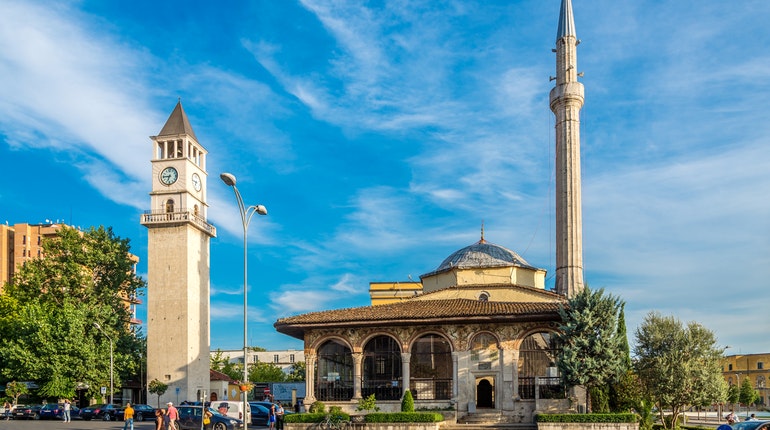
Tirana Boulevard
The Dëshmorët e Kombit Boulevard a major boulevard in Tirana. It was planned by the Italian architect Gherardo Bosio and built in 1939 to 1941. Many buildings are located along this boulevard, including the Presidential Palace, the Prime Minister’s Office, the Palace of Congress and the University of Tirana. The boulevard enters the city centre from the south and intersects with Bajram Curri Boulevard near the Rinia Park. It then becomes part of Skanderbeg Square and continues north of the centre to Zogu I Boulevard.

Pyramid of Tirana
The Pyramid of Tirana is a structure and former museum located in Tirana, Albania.Opened on October 14, 1988 as the Enver Hoxha Museum, the structure served as a museum about the legacy of Enver Hoxha, the long-time leader of Communist Albania who had died three-years earlier. The structure was co-designed by Hoxha’s daughter Pranvera Hoxha, an architect, her husband Klement Kolaneci. At the time, the Pyramid was said to be the most expensive individual structure ever constructed in Albania. Some sources have referred to it as the “Enver Hoxha Mausoleum” although this was never its official appellation.
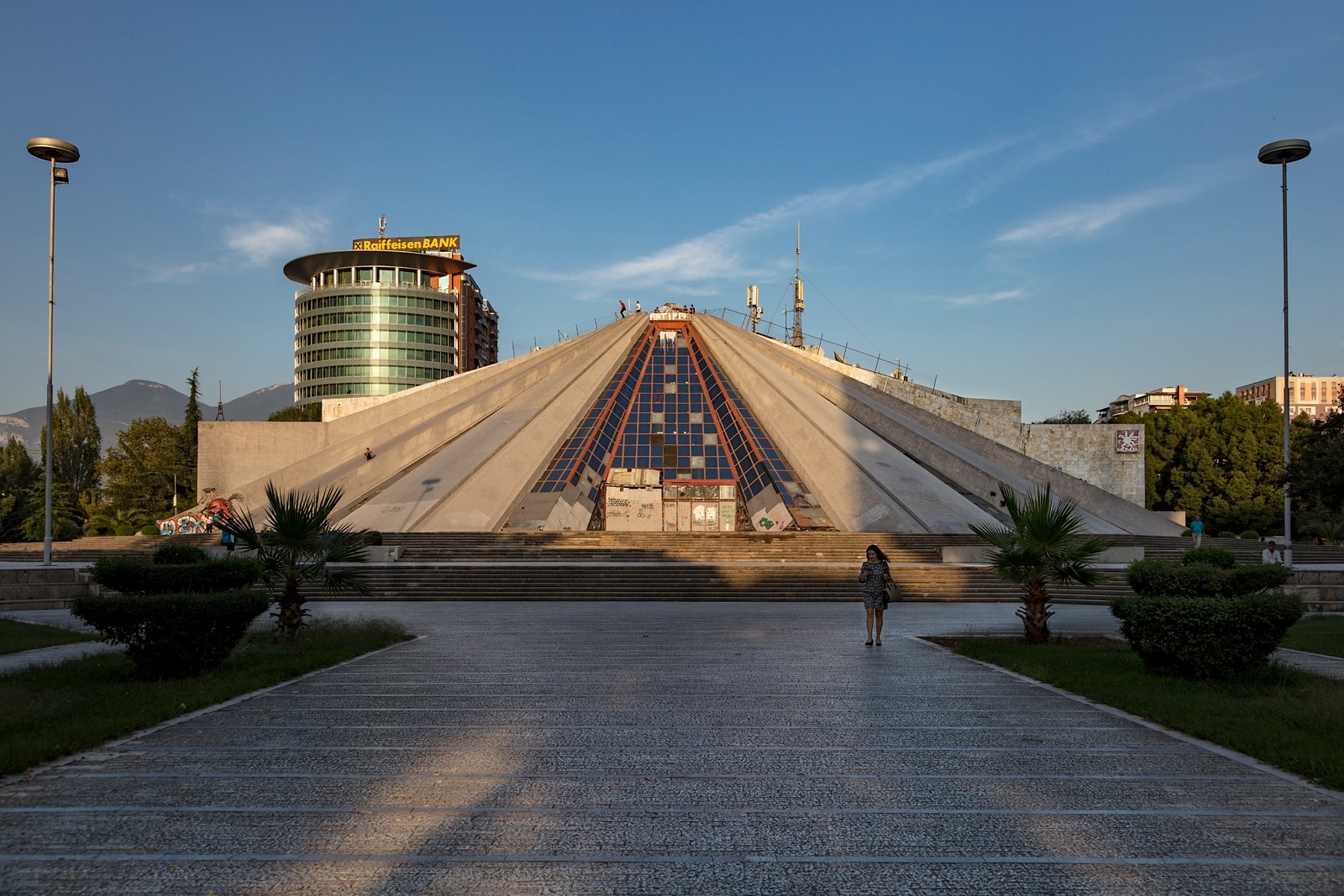
National Historical Museum
The National Historical Museum (Albanian: Muzeu Historik Kombëtar) is the national historical museum of Albania and the country’s largest museum located in Tirana. It was opened on 28 October 1981 and is 27,000 square metres in size, while 18,000 square metres are available for expositions.Above the entrance of the Museum is a large mural mosaic titled The Albanians that depicts purported ancient to modern figures from Albania’s history.The Museum includes the following pavilions, the Pavilion of Antiquity, Middle Ages, Renaissance, Independence, Iconography, National Liberation , Antifascist War, Communist Terror, and Mother Teresa.
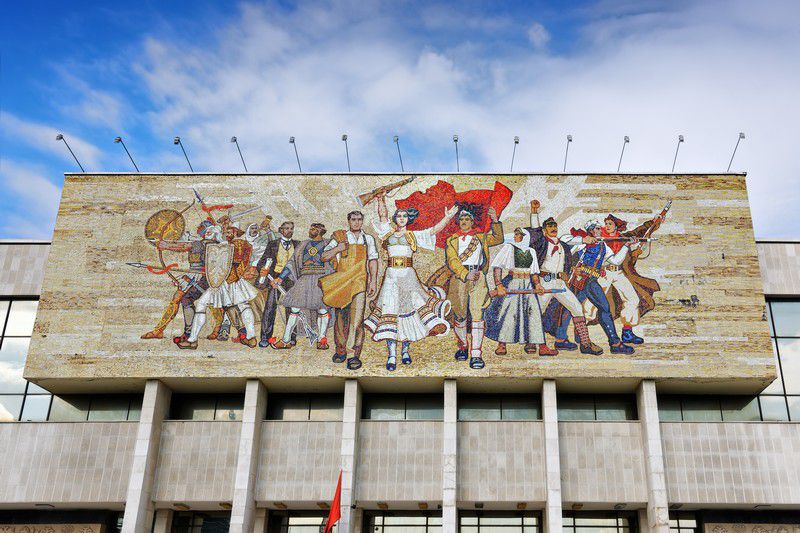
Tirana Mosaic
The Tirana Mosaic (Albanian: Mozaiku i Tiranës) is a landmark in Tirana, Albania. It is believed to have been part of a 3rd century Roman house, referred to by local archeologists as the ‘Villa Rustica’. Later, in the 5th and 6th centuries, a Paleo-Christian Basilica was built around this site. It was declared a cultural monument of the first category in June 1973.
The ruins of this Paleo-Christian Basilica were discovered in 1972. In 2002, some other objects were found around the ruins of the house, and today they form the Archaeological Complex of the Mosaic of Tirana. It is the only archaeological monument within the city. Some of the ancient mosaics discovered at the site that feature diverse geometrical patterns and depict poultry and fish. It was re-opened to the public on 23 January 2010.
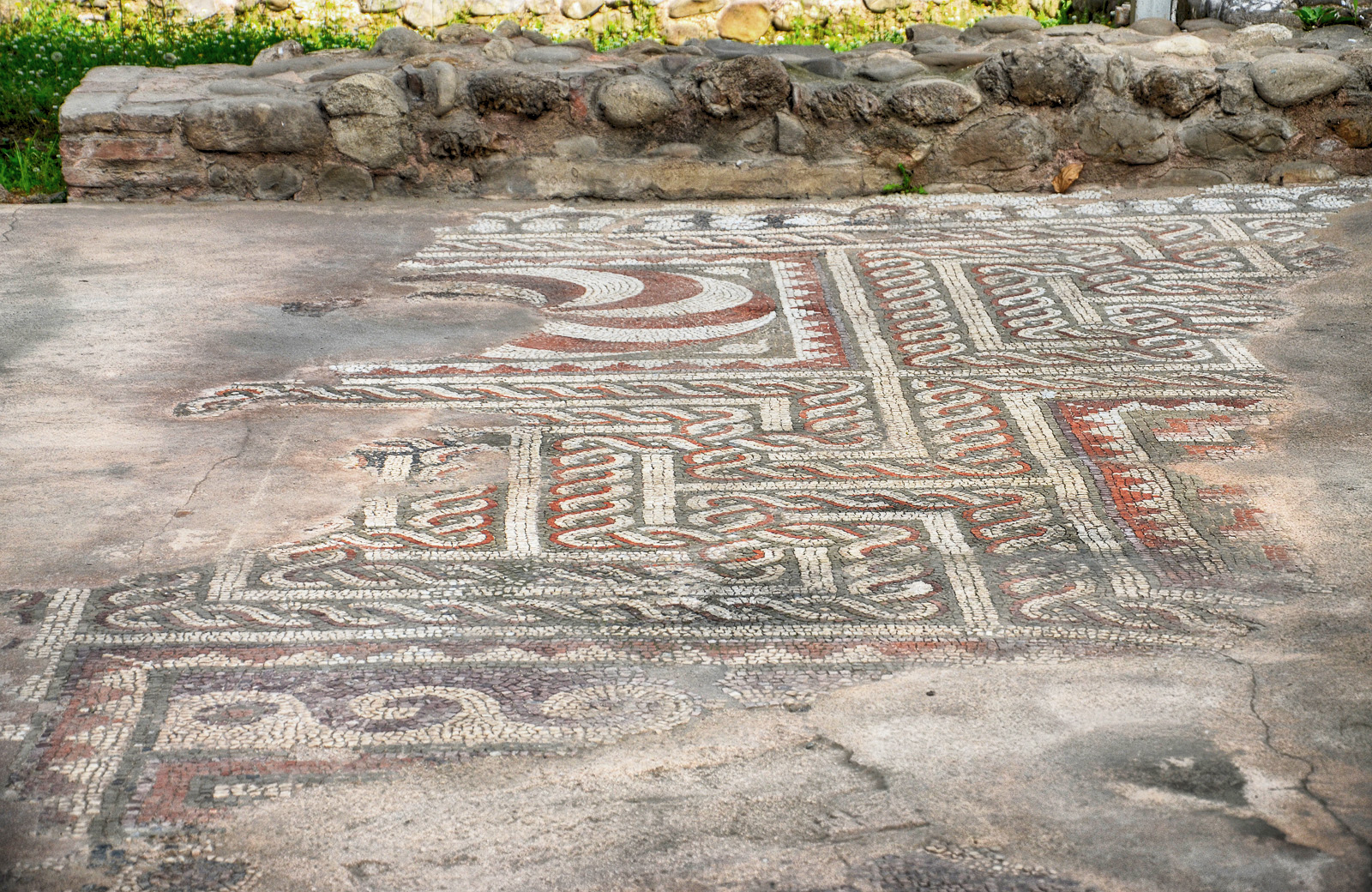
OHRID
Ohrid is a city in the Republic of Macedonia and the seat of Ohrid Municipality. It is the largest city on Lake Ohrid and the eighth-largest city in the country, with over 42,000 inhabitants as of 2002. Ohrid is notable for once having had 365 churches, one for each day of the year, and has been referred to as a “Jerusalem (of the Balkans)”. The city is rich in picturesque houses and monuments, and tourism is predominant. It is located southwest of Skopje, west of Resen and Bitola. In 1979 and in 1980 respectively, Ohrid and Lake Ohrid were accepted as Cultural and Natural World Heritage Sites by UNESCO. Ohrid is one of only 28 sites that are part of UNESCO’s World Heritage that are Cultural as well as Natural sites.
Basic Facts
Country Name: Macedonia
City Population: 42000
Also Known As: “Jerusalem (of the Balkans)”; Ohrid is notable for once having had 365 churches
Church of St. Sophia
The Church of St. Sophia is located in the city of Ohrid, Republic of Macedonia. The church is one of the most important monuments of Macedonia, housing architecture and art from the Middle Ages.
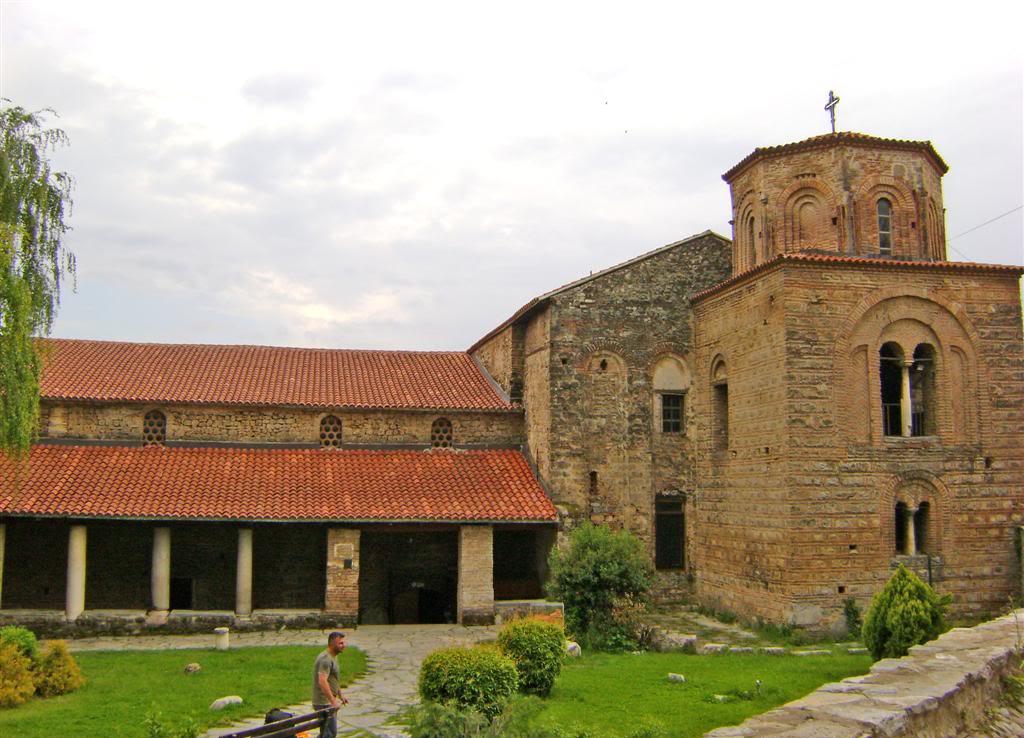
Ancient theatre of Ohrid
The Ancient theatre of Ohrid of the Hellenistic period. It was built in 200 BC and is the only Hellenistic-type theatre in the country as the other are from Roman times. It is unclear how many people the original theater used to seat, as only the lower section still exists. The open theater has a perfect location: the two hills that surround it keep it protected from winds that could interfere with acoustics during performances.
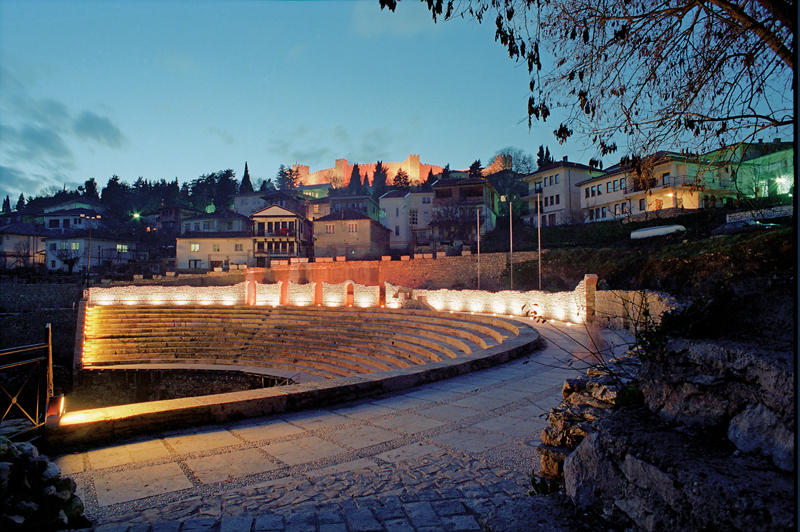
Samuel’s Fortress
Samuel’s Fortress is a fortress in the old town of Ohrid. It was the capital of the First Bulgarian Empire during the rule of Tsar Samuel of Bulgaria at the turn of the 10th century. Today, this historical monument is a major tourist attraction and was renovated in 2003.
According to recent excavations by Macedonian archaeologists, it was contended that this fortress was built on the place of an earlier fortification, dated to the 4th century BC, which was probably built by King Philip II of Macedon.
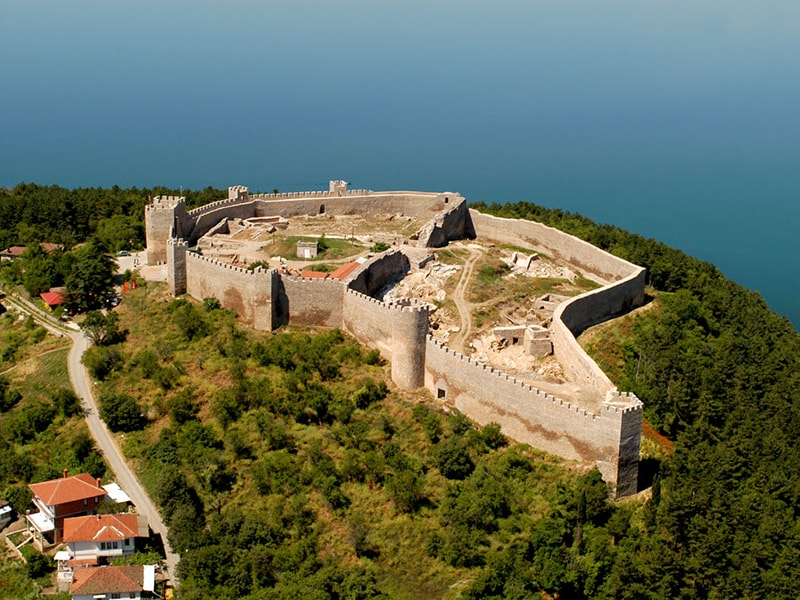
Lake Ohrid
Samuel’s Lake Ohrid straddles the mountainous border between southwestern Macedonia and eastern Albania. It is one of Europe’s deepest and oldest lakes, preserving a unique aquatic ecosystem that is of worldwide importance, with more than 200 endemic species. The importance of the lake was further emphasized when it was declared a World Heritage Site by UNESCO in 1979 and when, in 2010, NASA decided to name one of Titan’s lakes after Lake Ohrid. In 2014, the Ohrid-Prespa Transboundary Reserve between Albania and Macedonia was added to UNESCO’s World Network of Biosphere Reserves.The towns situated at the lakeside are Pogradec in Albania, along with Ohrid and Struga in Macedonia. The lake is otherwise densely surrounded by settlements in the form of villages and resorts in both basin countries.
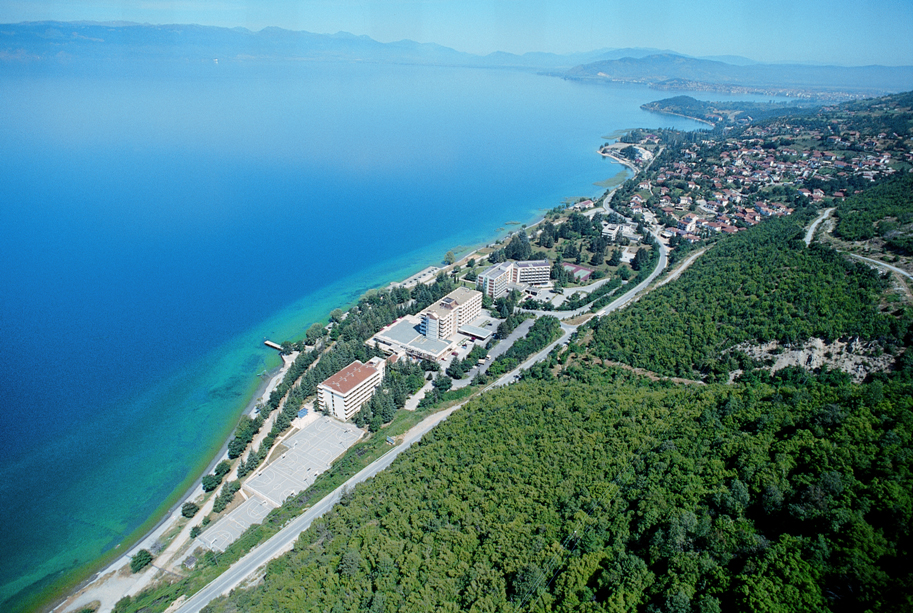
BELGRADE
Belgrade is the capital and largest city of Serbia. It is located at the confluence of the Sava and Danube rivers, where the Pannonian Plain meets the Balkans. Its name translates to “White city”. The urban area of the City of Belgrade has a population of 1.23 million, while over 1,68 million people live within its administrative limits.
One of the most important prehistoric cultures of Europe, the Vinča culture, evolved within the Belgrade area in the 6th millennium BC. In antiquity, Thraco-Dacians inhabited the region, and after 279 BC Celts conquered the city. It was conquered by the Romans during the reign of Augustus, and awarded city rights in the mid-2nd century. It was settled by the Slavs in the 520s, and changed hands several times between the Byzantine Empire, Frankish Empire, Bulgarian Empire and Kingdom of Hungary before it became the capital of Serbian king Stephen Dragutin (1282–1316). In 1521, Belgrade was conquered by the Ottoman Empire and became the seat of the Sanjak of Smederevo. It frequently passed from Ottoman to Habsburg rule, which saw the destruction of most of the city during the Austro-Ottoman wars. Belgrade was again named the capital of Serbia in 1841. Northern Belgrade remained the southernmost Habsburg post until 1918, when the city was reunited. As a strategic location, the city was battled over in 115 wars and razed 44 times. Belgrade was the capital of Yugoslavia from its creation in 1918.Belgrade has a special administrative status within Serbia and it is one of five statistical regions of Serbia. Its metropolitan territory is divided into 17 municipalities, each with its own local council. City of Belgrade covers 3.6% of Serbia’s territory, and around 24% of the country’s population lives within its administrative limits. It is classified as a Beta- Global City.
Belgrade Fortress
Belgrade Fortress consists of the old citadel (Upper and Lower Town) and Kalemegdan Park (Large and Little Kalemegdan) on the confluence of the River Sava and Danube, in an urban area of modern Belgrade. It is located in Belgrade’s municipality of Stari Grad. Belgrade Fortress was declared a Monument of Culture of Exceptional Importance in 1979, and is protected by the Republic of Serbia. It is the most visited tourist attraction in Belgrade, with Skadarlija being the second.
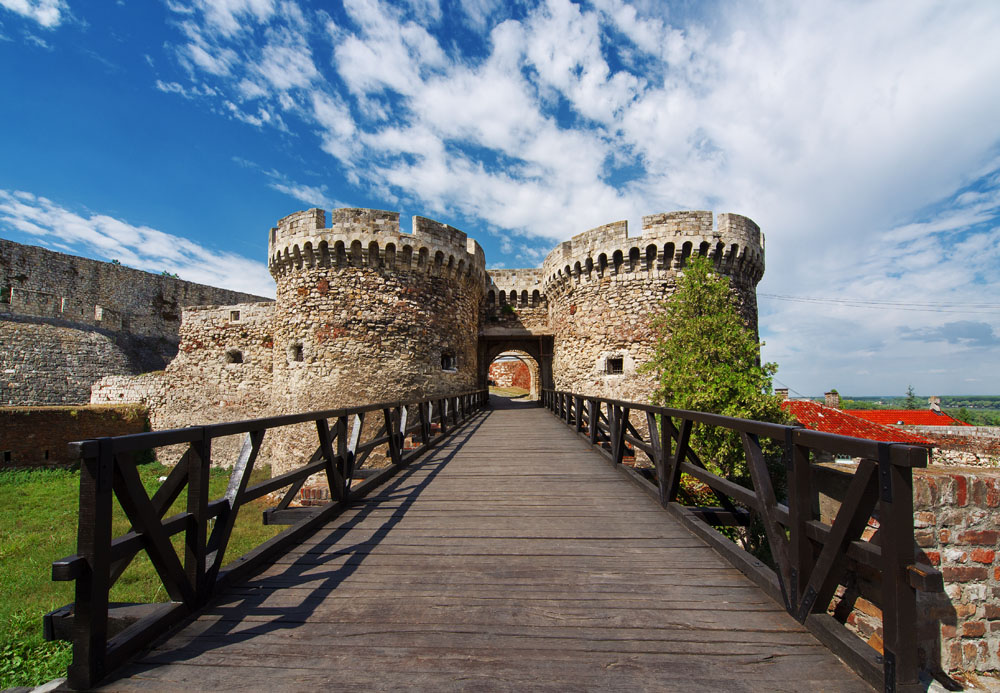
Skadarlija
Is a vintage street, an urban neighborhood and former municipality of Belgrade. It is considered the main bohemian quarter of Belgrade, similar to Paris’ Montmartre.
Since the admission is free, it is estimated that the total number of visitors (foreign, domestic, citizens of Belgrade) is over 2 million yearly.
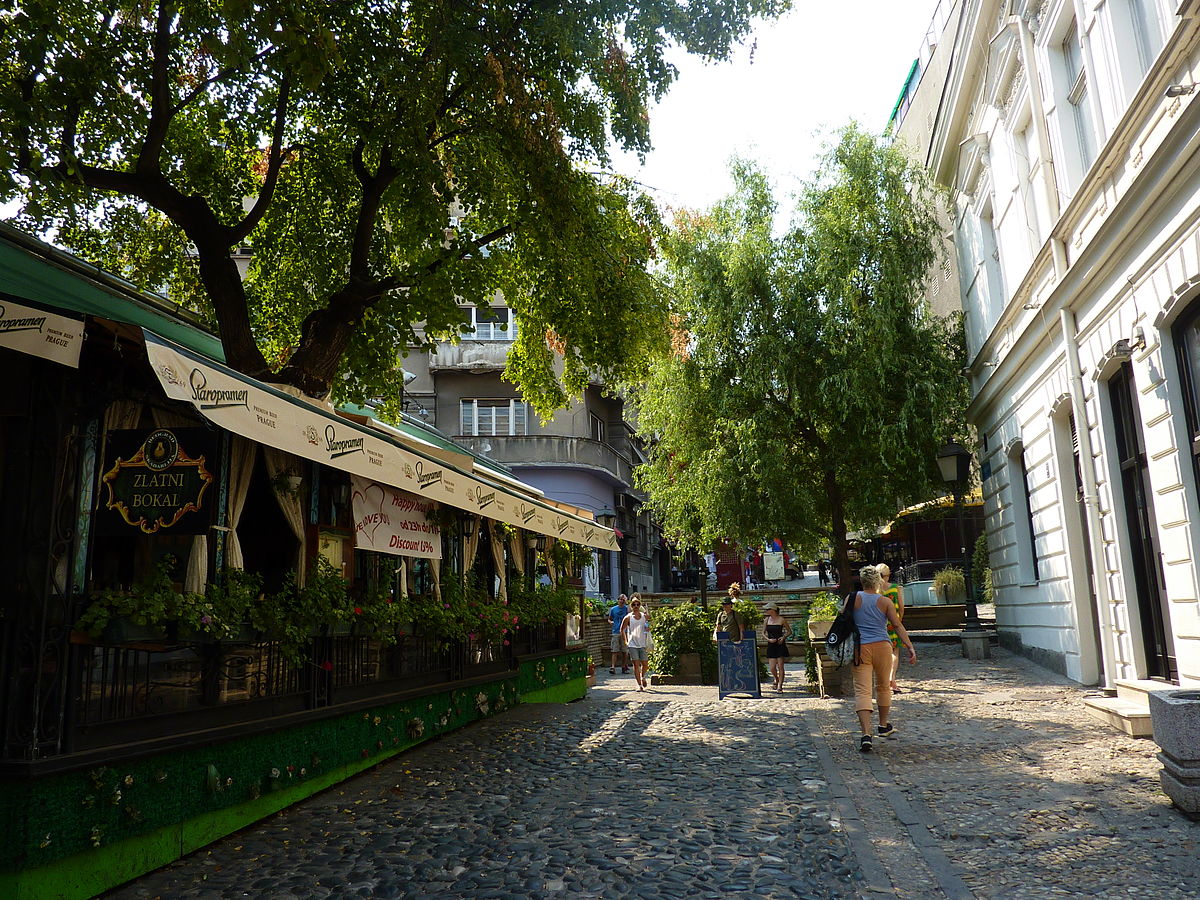
Bajrakli Mosque
The Bajrakli Mosque is a mosque in Belgrade. It is located in Gospodar Jevremova Street in the neighbourhood of Dorćol. It was built around 1575, and is the only mosque in the city out of the 273 that had existed during the time of the Ottoman Empire’s rule of Serbia.During the occupation of Serbia by the Austrians (between 1717 and 1739), it was converted into a Roman Catholic church; but after the Ottomans retook Belgrade, it was returned to its original function.
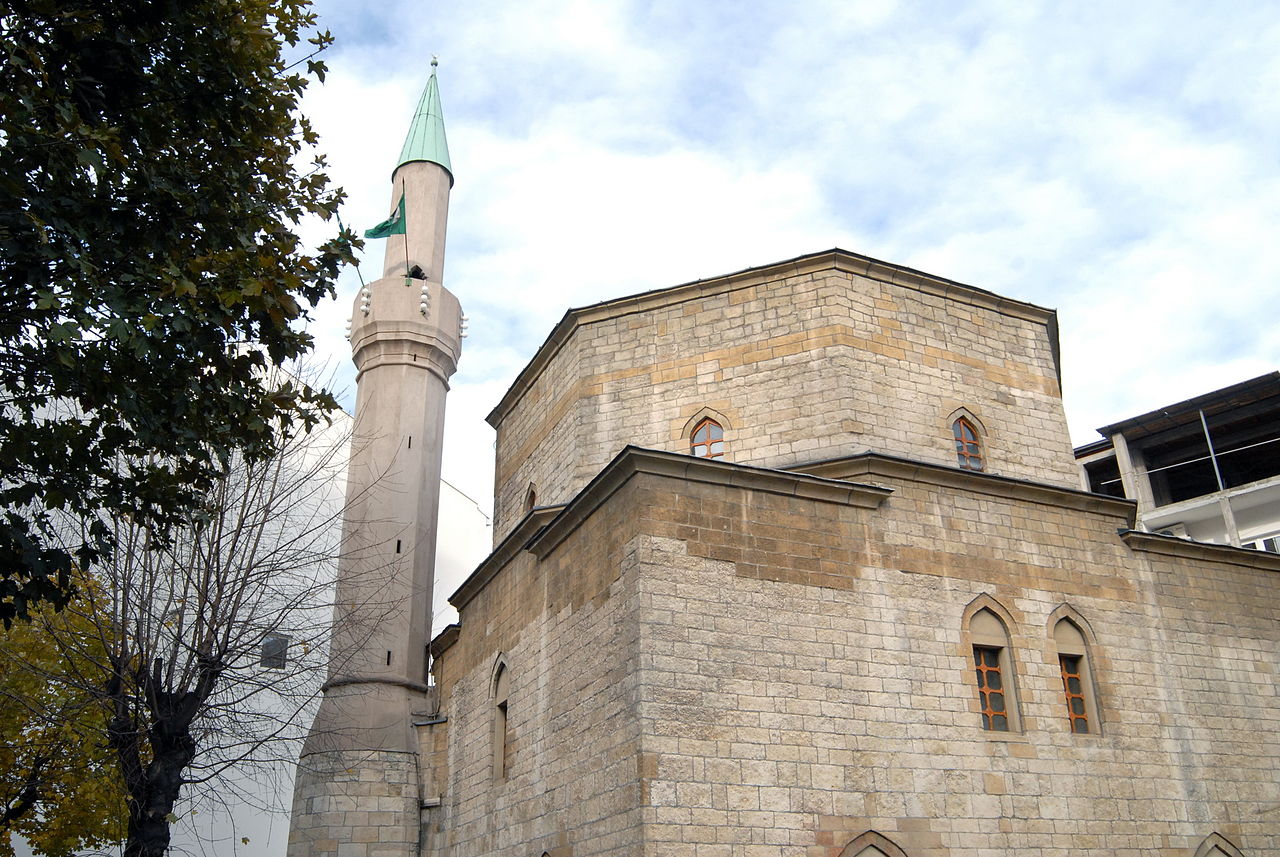
House of the National Assembly of Serbia
The House of the National Assembly of Serbia is the seat of the National Assembly of Serbia. The building is on Nikola Pašić Square in downtown Belgrade, and is a landmark and tourist attraction. Between its completion in 1936 and 2006, it was the seat of the Parliament of Yugoslavia and the Parliament of Serbia and Montenegro.

Church of Saint Sava
The Church of Saint Sava is a Serbian Orthodox church located on the Vračar plateau in Belgrade. It is one of the largest Orthodox churches in the world and ranks among the largest church building in the world.
The church is dedicated to Saint Sava, the founder of the Serbian Orthodox Church and an important figure in medieval Serbia. It is built on the Vračar plateau, on the location where his remains were burned in 1595 by Ottoman Grand Vizier Sinan Pasha. From its location, it dominates Belgrade’s cityscape, and is perhaps the most monumental building in the city.
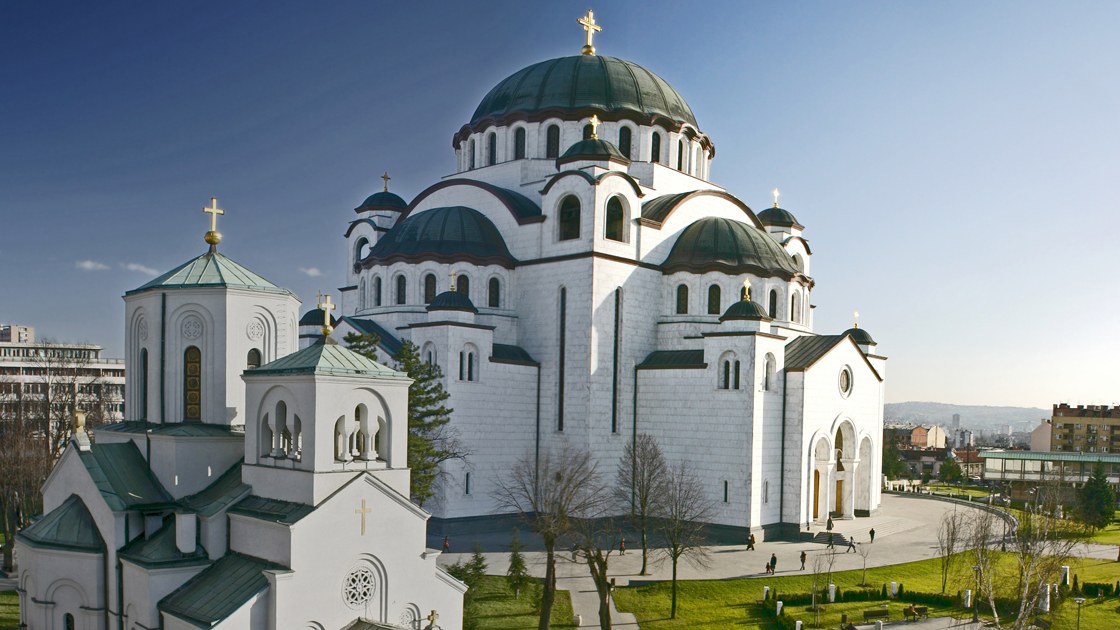
Sava River
The Sava is a river in Central and Southeastern Europe, a right tributary of the Danube. It flows through Slovenia, Croatia, along the northern border of Bosnia and Herzegovina, and through Serbia, discharging into the Danube in Belgrade. The Sava forms the northern border of the Balkan Peninsula, and the southern edge of the Pannonian Plain.
The Sava is 990 kilometres (615 miles) long. It is the greatest tributary of the Danube by volume of water, and second-largest after Tisza in terms of catchment area and length. The Sava is one of the longest rivers in Europe and among a handful of European rivers of that length that do not drain directly into a sea.
